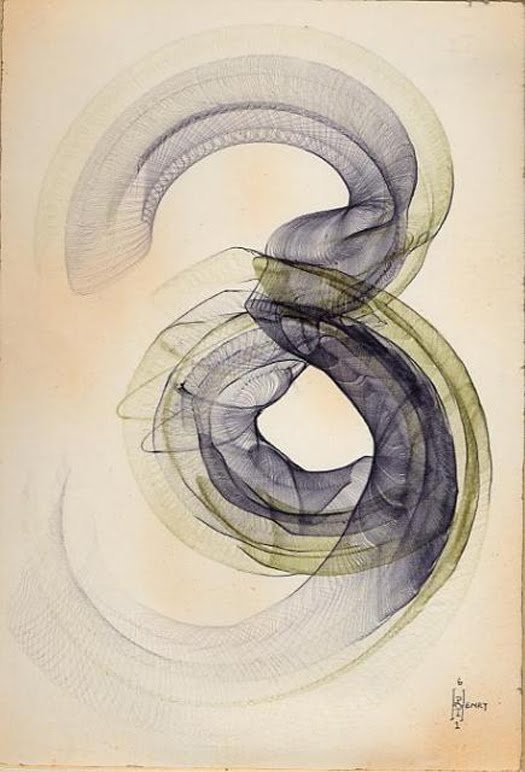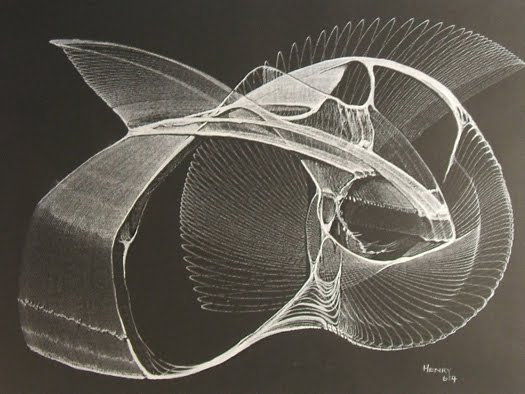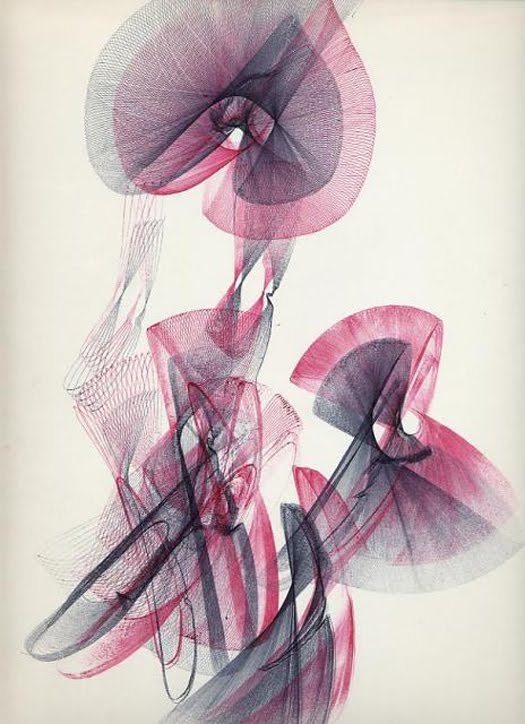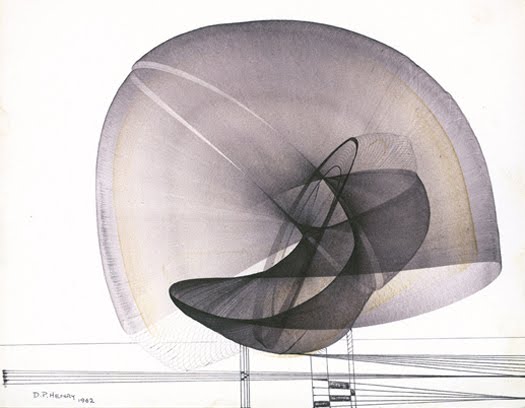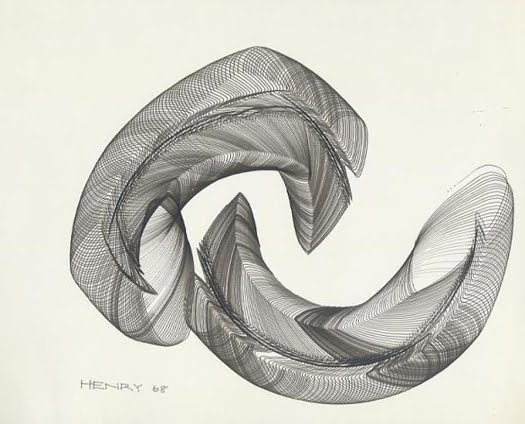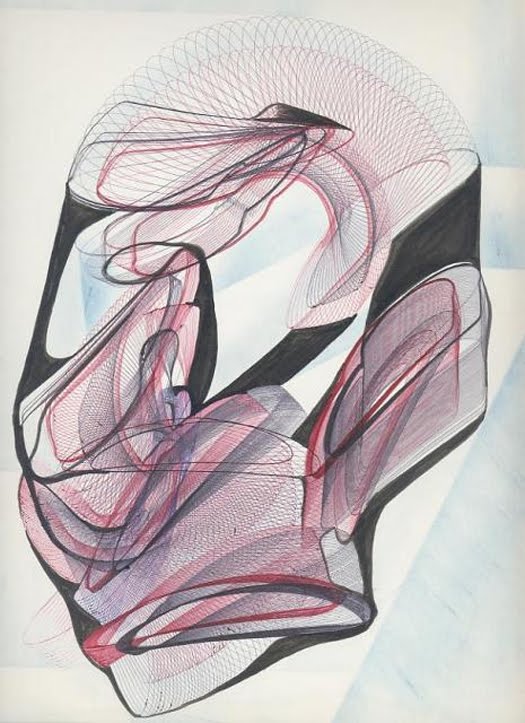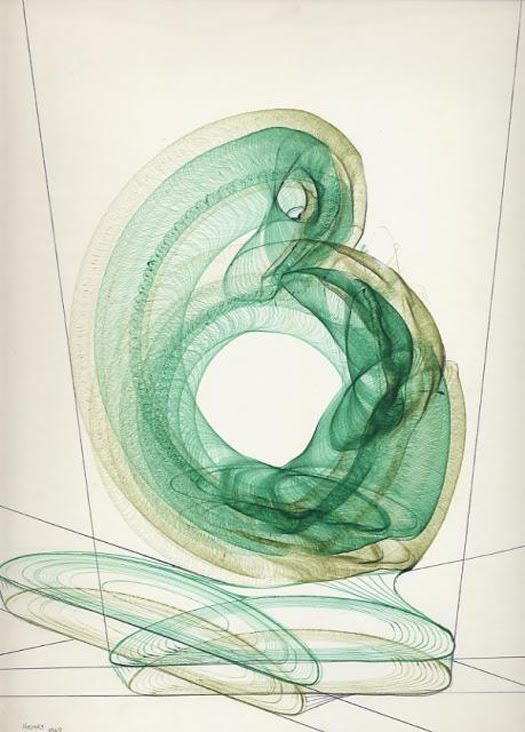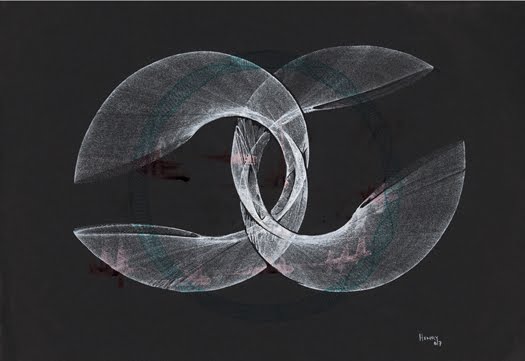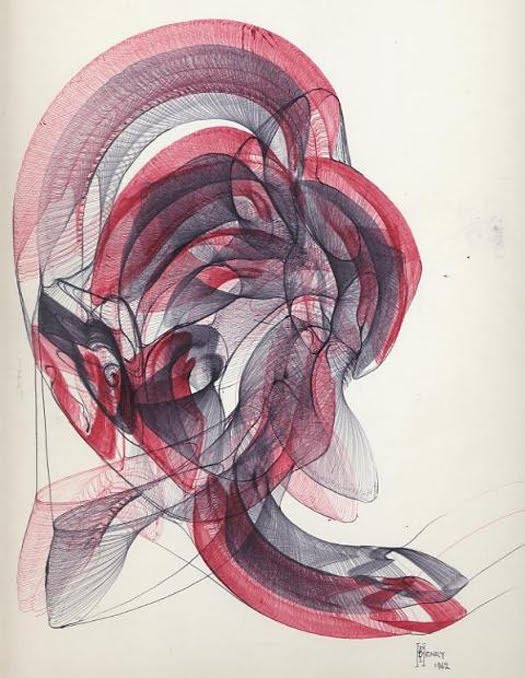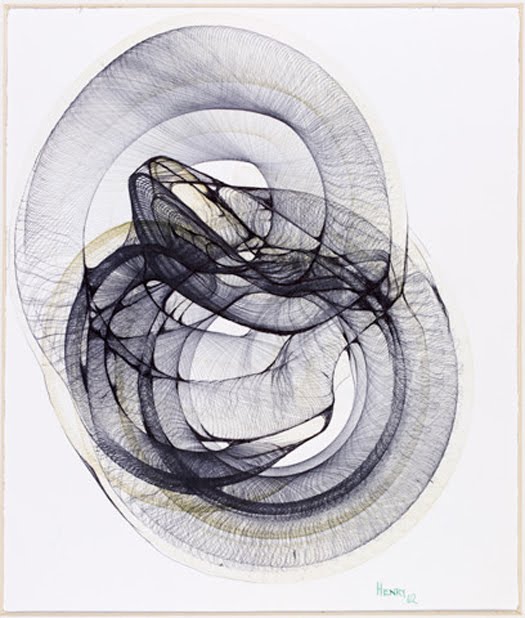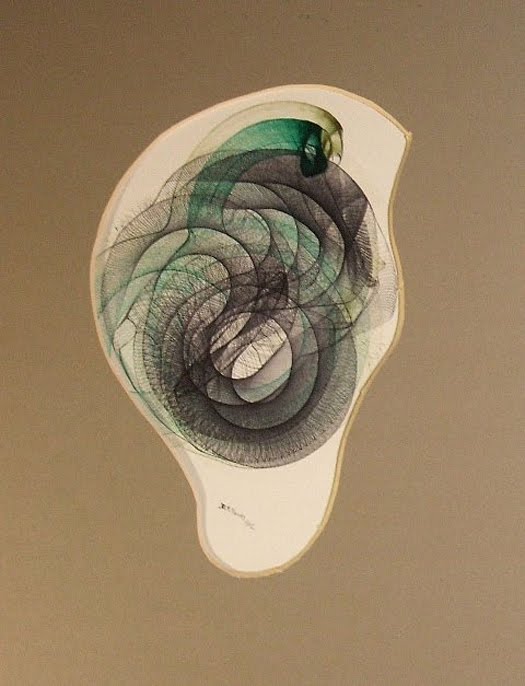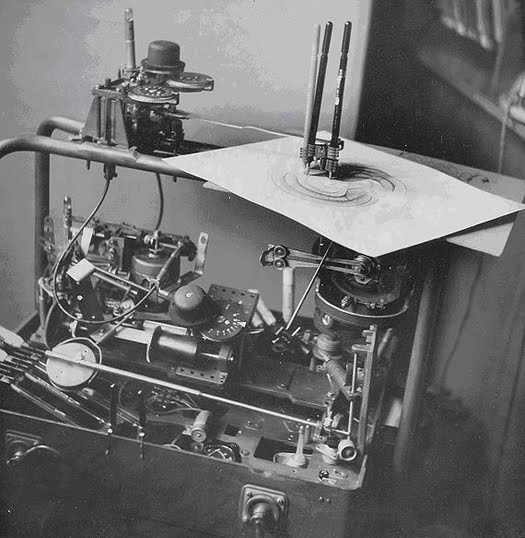British artist Desmond Paul Henry (1921-2004) is regarded as a pioneer of computer art. He constructed a total of three mechanical drawing machines (in 1960, ’63, and ’67) by repurposing components from analog bomb-sight computers. A fourth and fifth machine was produced in 1984 and 2002 from a mechanical pendulum design. None of the machines survive today.
His passion for mechanics was developed during his wartime experiences, and he purchased analog bombsight computers from an army surplus in the early 1950s. These mechanical computers were used in WW2 aircraft to determine an accurate release time for the bomb to hit its target using an arrangement of gyros, gears, motors, and a telescope with information on the wind speed, direction, altitude, and angle of drift inputted by the bombardier.
Desmond described the motion of the machine’s inner workings as “peerless parabolas” and considered the machine to be a work of art. This fascination translated into a desire to capture the machine’s movements on paper, which ultimately resulted in the drawing machines.
They operated on a “mechanics of chance”, and weren’t pre-programmed, nor could they store information, nor were they precise enough to produce the same image twice, offering only general control. Each drawing could take two hours to two days to produce. However, Desmond could intervene to direct the pattern being produced. This spontaneous interactivity was sometimes embellished by hand to enhance its artistic features.
Desmond’s recognition as an artist took off in 1961 courtesy of the Salford Art gallery where he won an exhibition at the Reid gallery for his novel photochemical techniques. The Reid gallery exhibit in 1962 Ideographs showcased his machine-generated effects for the first time, which were described by The Guardian as being “quite out of this world” and “almost impossible to produce by human hands”. His artworks continued to be featured in various exhibitions during the ’60s, the most notable being “Cybernetic Serendipity” in 1968, a premier exhibit of significant art/technology of the decade which included his drawing machine.
In 2001, Henry was introduced to the artistic application of Fractal Mathematics, which finally provided him with the necessary terminology to describe his chance-based aspects of the drawing machines. Desmond termed his machine-generated art as “mechanical fractals”, seeing as how fractal systems are produced by a non-linear dynamic system of interdependent elements, which Desmond had mechanized. Put simply, a fractal is a pattern produced by the laws of nature repeating at different scales. Trees, heartbeats, weather, brain waves, river deltas, the Fibonacci sequence, the Mandelbrot set, etc all display fractal patterns. Understanding fractals gives us the ability to create digital worlds reminiscent of our own. Before this, he described his images as forms similar to those found in geometric lathes, natural form mathematics, and pendulum harmonographs.
The spontaneous interactivity created by the drawing machines preceded similar functionality of computer graphics software by twenty years. Desmond’s surreal and otherworldly shapes with endless variations are the precursors of the data visualizations and digital images we see today, giving us early glimpses of the intricate forms pervading through design today.
Desmond’s drawing machines provide a link between the Mechanical/Industrial age and the Electronic/digital age.
